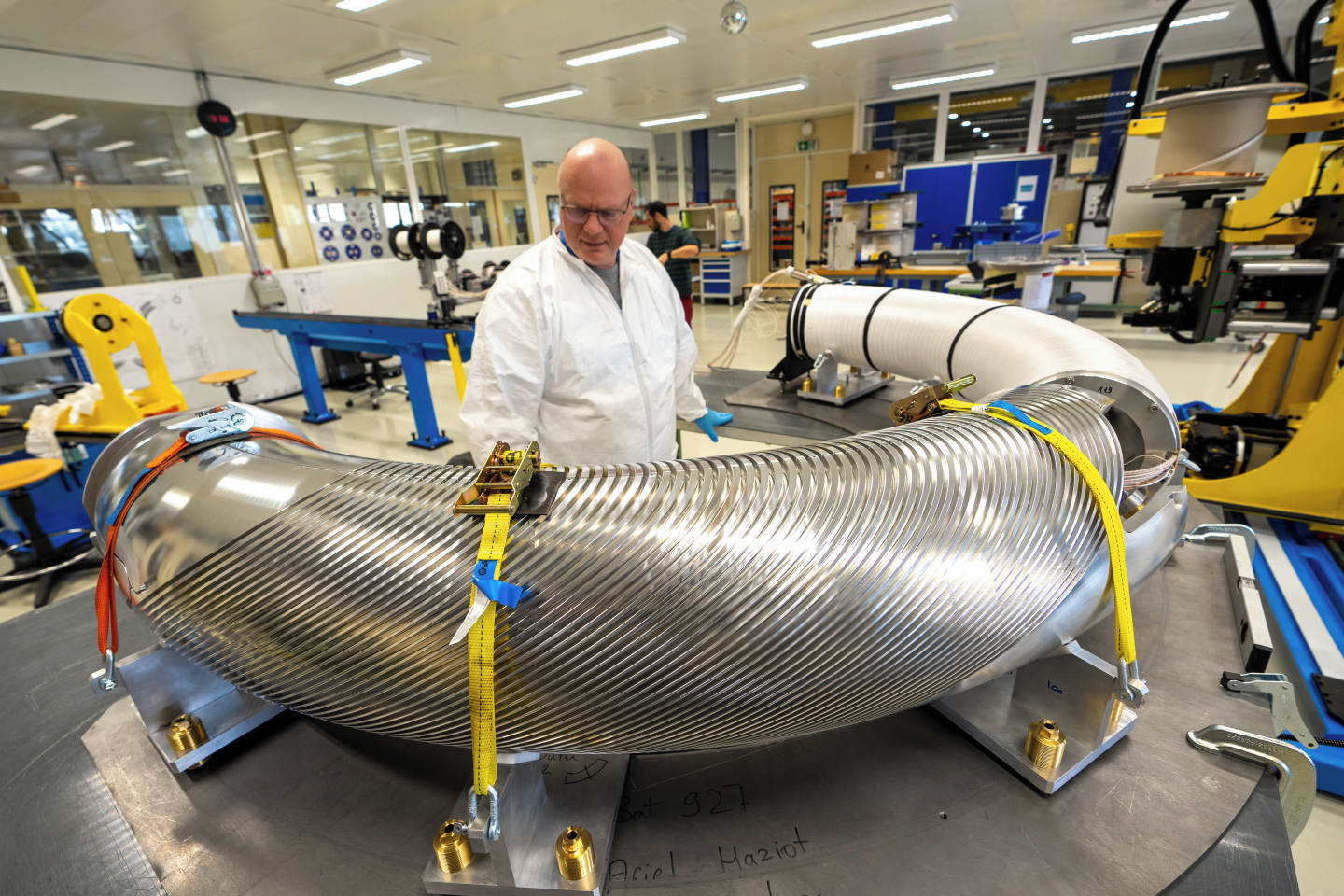
Frédéric Garnier controls the process of inserting the inner former into the outer former. The grooves in the outer former, into which the cable was later fed, are clearly visible. (Image: M. Struik/CERN)
What do rope winding and giant pasta shapes have to do with particle physics? The answer is a new magnet prototype under development at CERN, lovingly named Fusillo because of its shape. Originally, CERN physicists became interested in developing this technology for use in compact particle accelerators, for example in a new storage ring for the CERN-based experiment ISOLDE. However, development of this technology could also have a big impact in the medical field. For example, one of the possible future applications of magnets like Fusillo is in hadron therapy to treat cancer.
Hadron therapy is a type of radiotherapy that uses beams of protons or light ions to irradiate cancer tissue. Compared to X-rays, which use beams of light, beams of ions release less energy along their path and more energy in one specific spot. This causes less radiation damage to the healthy tissue surrounding the tumour and allows a higher dosage to be administered safely, resulting in a faster destruction of the tumour. Less damage to the surrounding tissue also leads to a lower toxicity rate, meaning the patient will feel better during and after treatment.
In the last few decades, over a hundred hadron therapy facilities have been built worldwide. However, few medical centres have the means to acquire the machines for this treatment as the magnets needed are costly and typically require resources like high currents and helium cooling. So far, hadron therapy is only offered in some European and Asian countries and the USA, while there are none in Africa and only one under construction in South America. With the technology of Fusillo, a Curved-Canted-Cosine-Theta (CCCT) dipole demonstrator, the treatment might become more accessible in the future. This new type of electromagnet has many benefits: it requires a much lower current, has a relatively low cost and is more compact than other magnets due to a simplified design that requires fewer individual parts. Fusillo is also expected to be more easily cooled by dry cooling without using liquid helium, unlike many other superconducting magnets.

The basis of Fusillo's design is cable wound into two nested coils. The coils are tilted following the grooves of the so-called "former", seen in the first picture. The inner coil is tilted in the opposite direction to the outer coil, and together they produce a dipole field inside the tube. This is a new approach to creating a dipole field, which is being tested by the Fusillo demonstrator. Although the underlying idea has been around for many decades, the necessary computing power for its design has only been available in recent years. To produce a magnet that can be powered by a low current, Ariel Haziot and his team at CERN decided to twist multiple insulated wires into a type of rope that is then wound around the former. The individual wires are connected in a way that allows the current to run many laps around the coils, creating an electromagnet of usable strength (3 T in the centre) that requires a relatively small amount of current (300 A).
The Canted-Cosine-Theta (CCT) concept has been in development at CERN since 2014 and is used in the High-Luminosity LHC. The current project of building a curved CCT demonstrator has so far taken Haziot and his team about 2.5 years. The photos document the recent process of winding the cables around the former. With only a couple of final steps to go, the building phase is drawing to a close and the first full-scale tests of this new magnet are planned for April. Following several subscale assessments, the tests will compare the magnet against simulation results and determine the next steps in the development process. Magnets like Fusillo are expected to be in use in the new storage ring for HIE-ISOLDE within about five years and might then be developed further for other applications, including hadron therapy.







